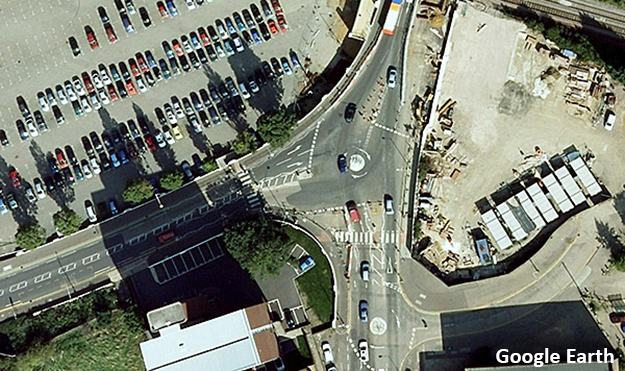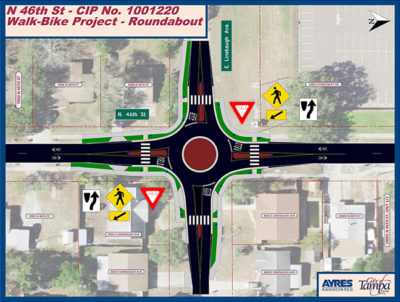What’s a Mini Roundabout, And Why Is It Effective?

 By Kevin Kuhlow, PE
By Kevin Kuhlow, PE
Modern roundabouts are becoming quite popular in many states because of their proven ability to reduce not only the number of accidents at an intersection but also the severity of an accident when one occurs. In some metropolitan areas it is difficult to drive for very long without encountering a roundabout.
Roundabouts come in many sizes – from the easier-to-navigate single-lane versions to complex roundabouts featuring multiple lanes with five or more legs.
The Traversable Central Island
One type of roundabout design starting to gain traction in the United States is the mini roundabout, which features a reduced diameter (50 to 90 feet) with a traversable central island, allowing buses and trucks to travel over the top of it. Passenger vehicles are expected to use the circular roadway around the central island.
A mini roundabout’s center island can be designed flush or raised. Physical deterrents, such as raised pavement markers or rumble strips, are often added to flush central islands to encourage drivers of passenger vehicles to use the roundabout’s travel lanes and not the central island.
Mini Roundabout: A Good Fit
A benefit of the mini roundabout is its smaller footprint and lower cost to construct, making it a good option for lower-speed, two-lane streets in urban and suburban settings. In most cases a mini roundabout can fit into the intersection’s existing right-of-way, eliminating the need to acquire additional property, which is common with larger roundabouts.

Drivers are also encouraged to reduce speed when approaching a mini roundabout through the use of advisory speed signs and narrower approach lanes.
Mini roundabouts are just one of the intersection tools available to help improve operations and safety in a community. With the benefits of their compact size, operational efficiency, safety, and traffic calming, mini roundabouts are poised to skyrocket in popularity across the United States.
Kevin Kuhlow, PE, is manager of Ayres’ traffic engineering group, supervising staff who provide traffic analysis and engineering services around the nation from multiple offices. He is a leading U.S. roundabout designer and has been involved with developing hundreds of roundabouts throughout North America since 2000, ranging from mini roundabouts to complex three-lane roundabouts.

Post a comment: